On the afternoon of 9 June 1772, the Royal Navy schooner HMS Gaspee ran aground in Narragansett Bay, on the north side of Rhode Island Sound. Unable to free the ship, its crew, led by Lieutenant William Dudingston, elected to wait until high tide in the hope that the Gaspee would be freed. However, just after midnight the beached ship was approached by over a dozen smaller vessels, whose men boarded the Gaspee, wounded Dudingston, and plundered and burnt the Royal Navy schooner. In the days, weeks and months that followed, the British Government tried to ascertain the facts of the matter and punish those responsible.
Dudingston and his men had made few friends in the months preceding the attack on the Gaspee. Like many Royal Navy vessels, the Gaspee was charged with patrolling the American coastline and enforcing unpopular customs laws imposed by the British Government on American ports. In February 1772, Dudingston had seized the sloop Fortune and sent its cargo – undeclared rum barrels – to Boston.
This event put Dudingston at odds with Governor Joseph Wanton, who warned him not to overstep his jurisdiction. In March 1772, Wanton wrote to Dudingston that many of the inhabitants of Newport, Rhode Island had complained that he and his men had been illegally interrupting their trade by searching and detaining every boat the Gaspee came upon. He asked Dudingston to produce any orders that authorised such a search.
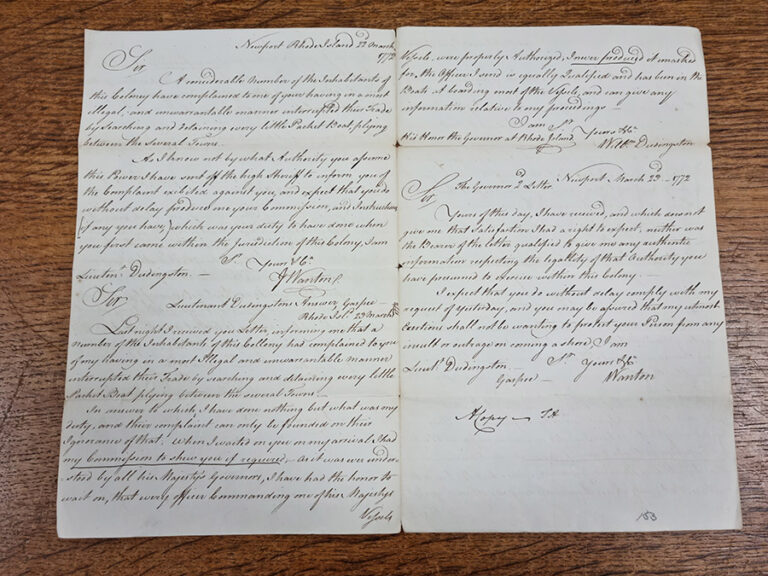
Instead, Dudingston complained to Admiral Montagu. The Admiral wrote to Wanton in April, chiding him for not letting Dudingston do his duty and warning him that any person involved in stopping the king’s fleet from preventing illicit trade would be hanged as pirates.
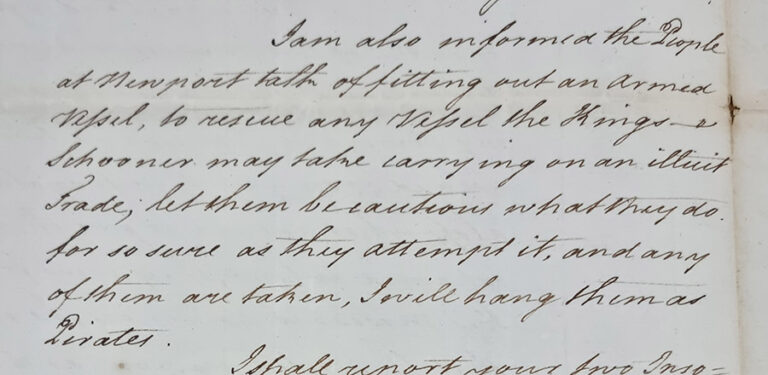
Wanton, however, was not fazed by Montagu’s letter. The last time he checked, British governors in America did not have to take orders from the Admiralty, and regardless, Dudingston had failed to produce any orders permitting him to patrol the coast of Rhode Island when asked, so that Wanton did not know ‘whither he came hither to protect us from Pirates, or was a Pirate himself’.
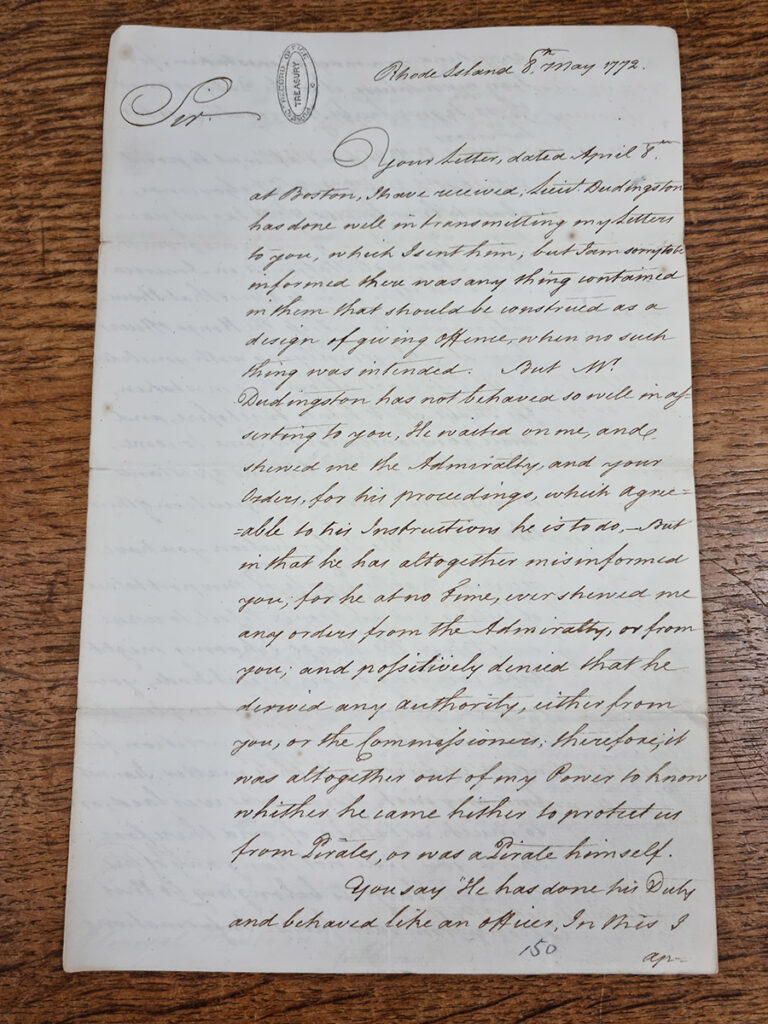
It was little surprise then that on the afternoon of 9 June, when the Gaspee gave chase to the packet ship Hannah, the master of the smaller vessel, knowing the layout of the river well, intentionally lured Dudingston into shallow waters. At around about half past midnight, the Gaspee was boarded by armed men, who quickly overwhelmed the crew. Lieutenant Dudingston was shot, wounded in his groin and arm, and the rest of the crew surrendered.
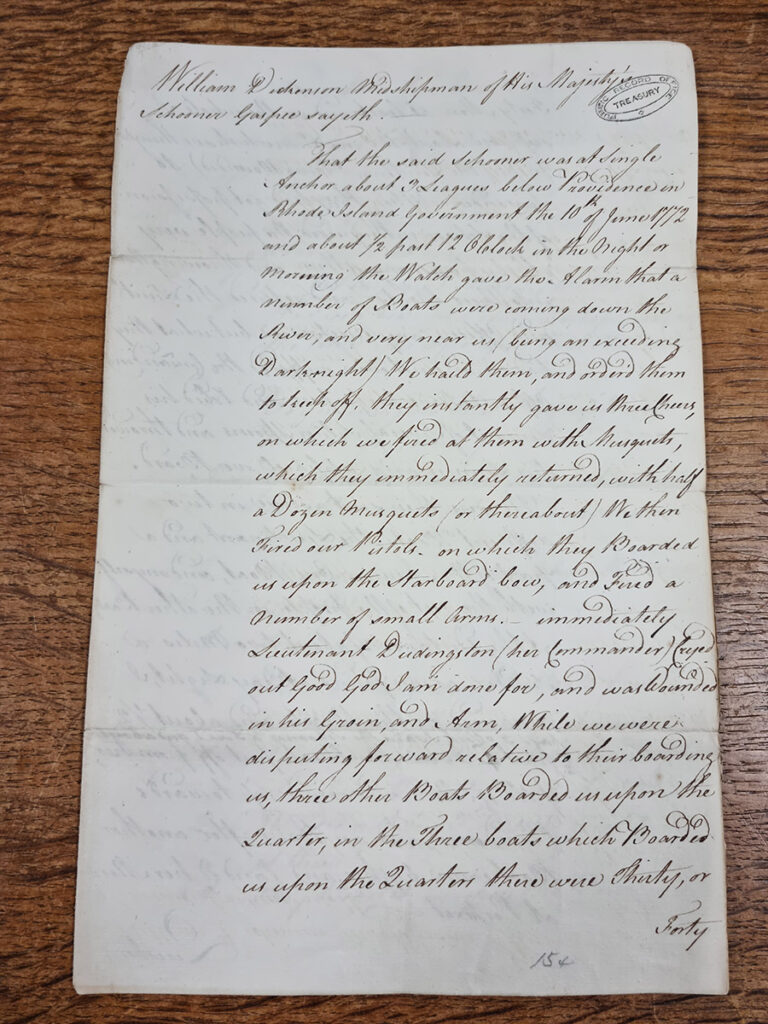
On 11 June, Deputy Governor Darius Sessions arrived at Pawtuxet Village, where Dudingston and his men had been taken. He asked if any individual perpetrators had been identified and began interrogating the crew of the Gaspee to get their statement of events. Admiral Montagu had drawn up a set of questions to get to the truth of the matter. Suspecting that the culprits were locals, one of the questions asked whether the people who boarded the ship were from Providence. The deponents believed that they were, most likely men of trade. However, no individuals were identified.

Meanwhile, Dudingston was having a torrid time. His wounds took a long time to heal and it would be several weeks before he was taken into protective custody by HMS Beaver. All the property he had with him had been burnt and destroyed along with the Gaspee, and a court martial awaited him for the loss of the Gaspee (though he would be honourably acquitted of this in October 1772). To make matters worse, while recovering from his wounds the high sheriff of the province arrived to arrest him for his previous seizure of the goods on the Fortune.
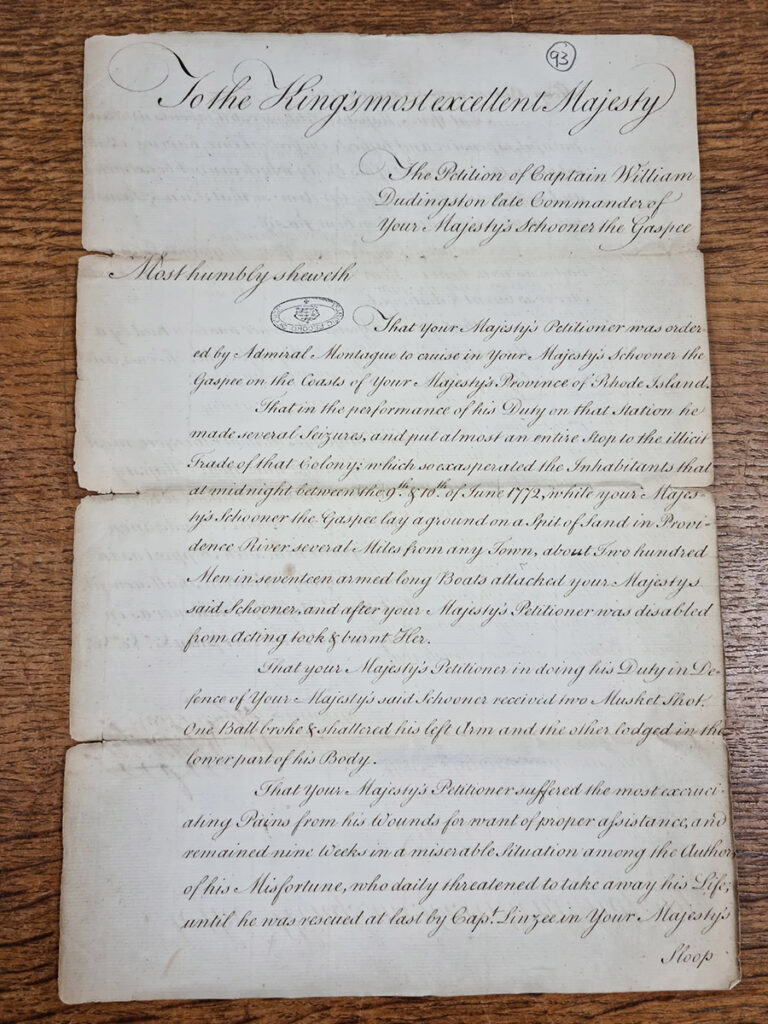
Governor Wanton, regardless of any personal ill feeling he felt towards Dudingston, also did his part in attempting to identify the ‘perpetrators of the said villainy’, issuing a proclamation on 12 June offering a £100 reward to any person that provided information that helped bring these people to justice.

Still though, no individuals had been identified. However, in July 1772 Aaron Biggs (or Briggs), an indentured servant, came forward to say that he had been on one of the boats that stormed the Gaspee, and could name the ringleaders of the attack.
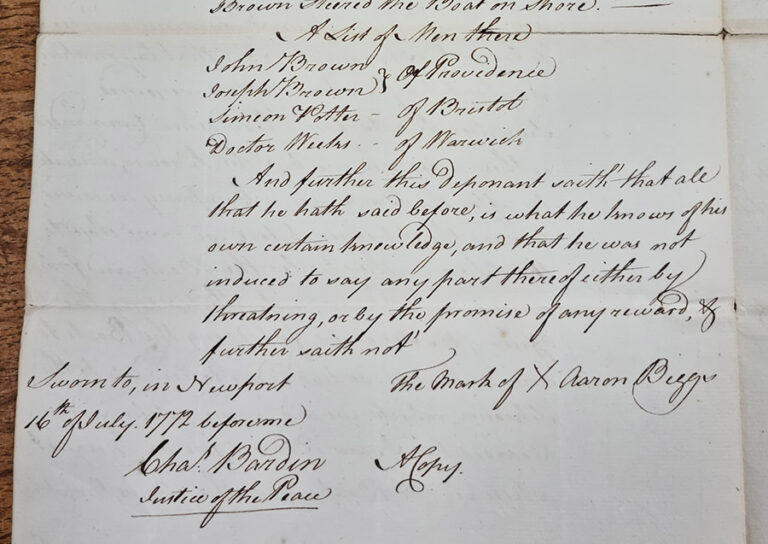
A commission to investigate the burning of the Gaspee was subsequently set up, led by Governor Wanton. It commenced in January 1773. The key witness was Biggs, the only person willing to name individuals involved in the burning of the ship. However, by this point those accused faced far more serious charges than simple piracy or destruction of property. In the second half of 1772, the earl of Dartmouth, secretary of state for the colonies, had put the case to the Attorney General, asking what crime the perpetrators could be charged with. It was the Attorney General’s opinion that the burning of one of His Majesty’s ships constituted levying war against the King, therefore the crime of high treason applied.
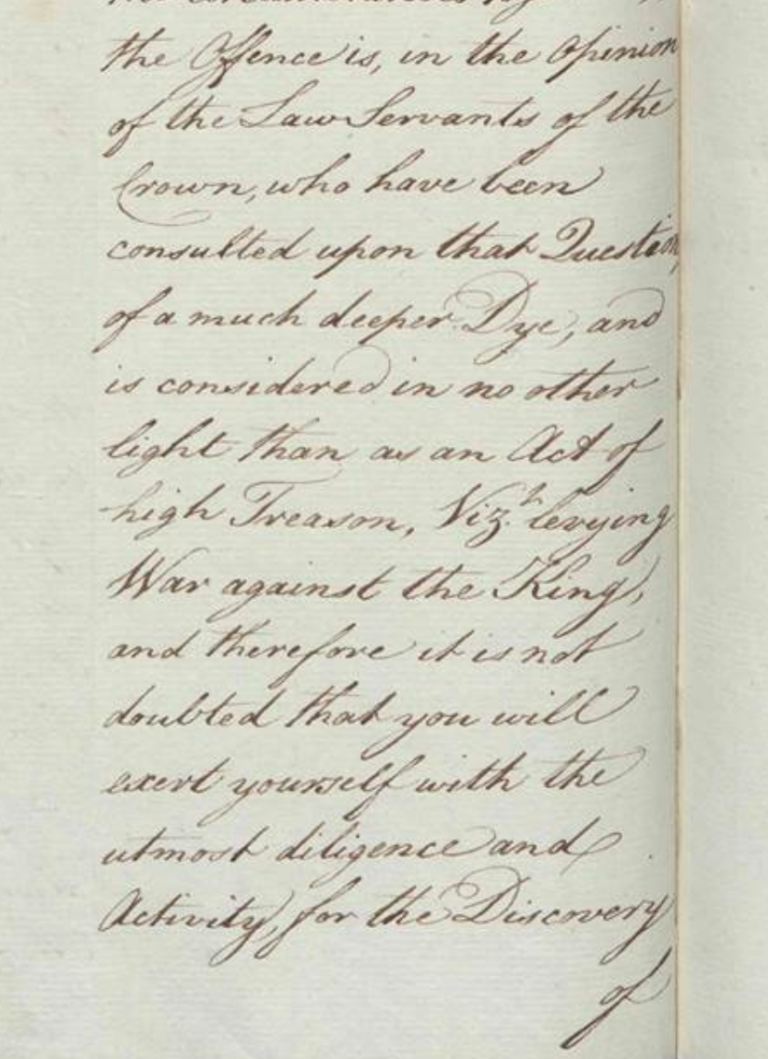
However, during the investigation, it transpired that Biggs had been compelled – under threat of violence – to name certain individuals as the instigators of the Gaspee attack. As Biggs’ account was the only one that named individuals, the commission concluded that no-one could be punished for the burning of the Gaspee. This conclusion may have been orchestrated by Governor Wanton, who did not wish to escalate tensions further by charging anyone with treason.
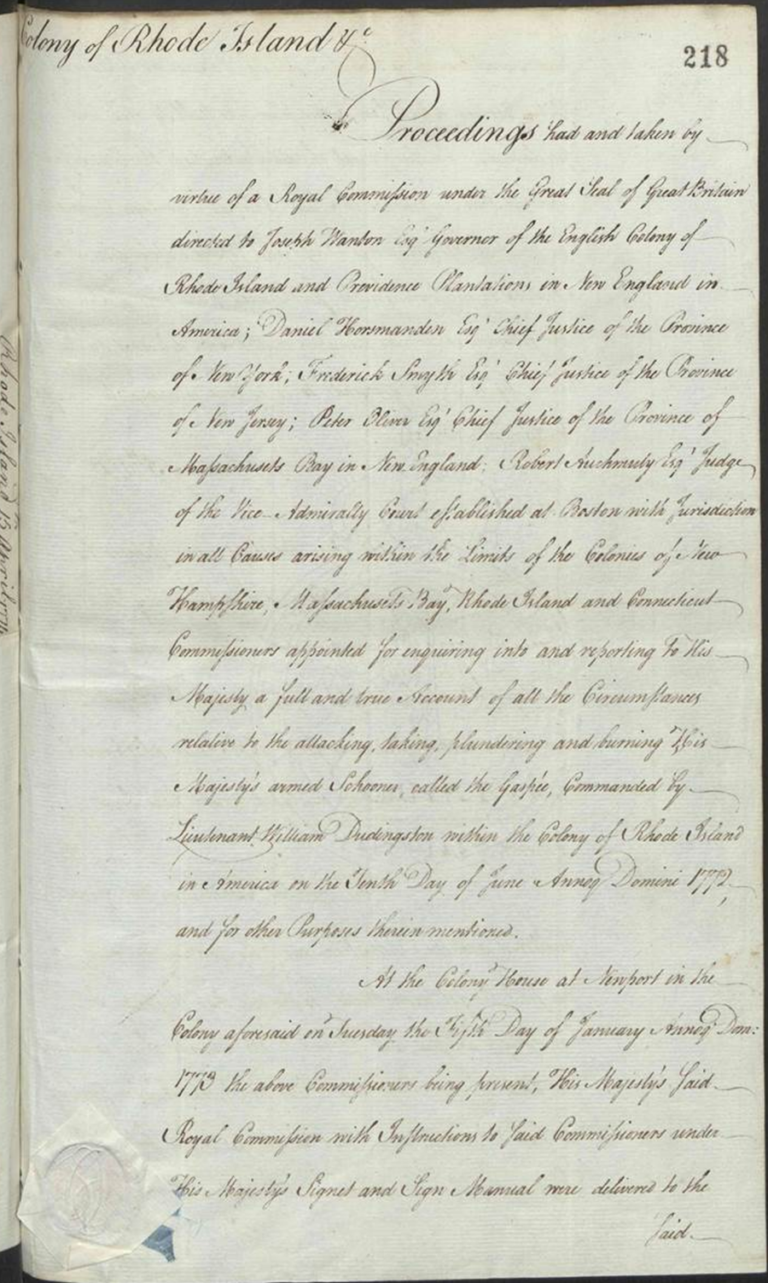
The end of the commission in June 1773 drew a line under the Gaspee affair, and no further attempts to identify and punish individuals were made. However, the issues at the heart of the Gaspee affair – the imposition of unpopular taxes and the heavy-handedness of the British enforcing these taxes – persisted. In December 1773, a group of Boston merchants threw chests of tea into Boston Harbour, protesting the Tea Acts. In April 1774, less than a year after the commission into the burning of the Gaspee concluded, Britain and the 13 American colonies were at war.
A very interesting account of a relatively unknown incident, particularly in the closeness of its timing to the ‘Boston Tea Party’.
The Rhode Island Marine Archaeology Project (www.rimap.org) is planning a major expedition in July 2022 to determine if anything might be left of HMS Gaspee off Namquid Spit in Warwick, Rhode Island. It’s uncertain at this writing if anything might be left of the vessel, but the importance of its burning, as a harbinger of the American Revolution, has usually been underestimated.